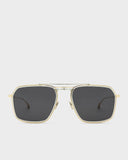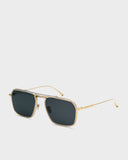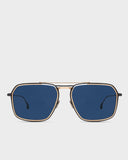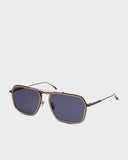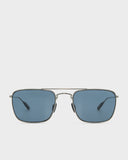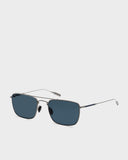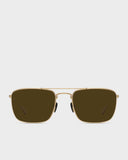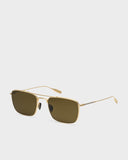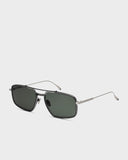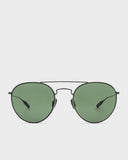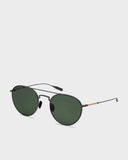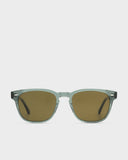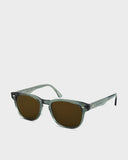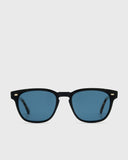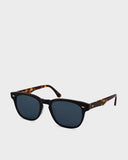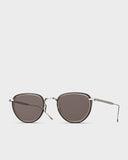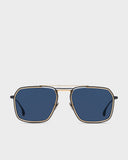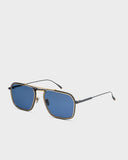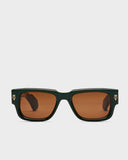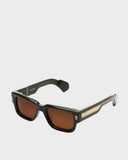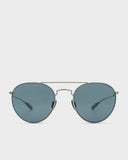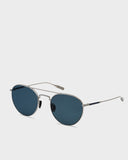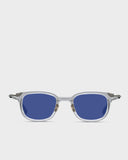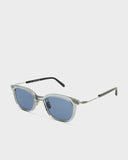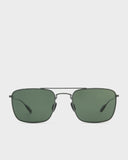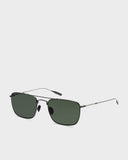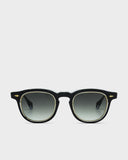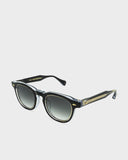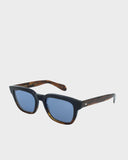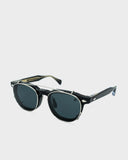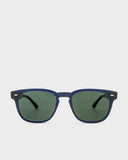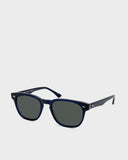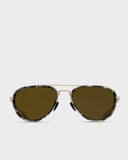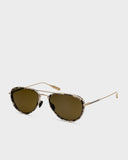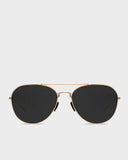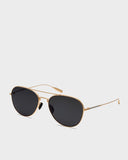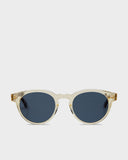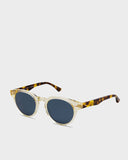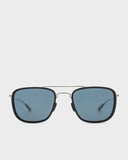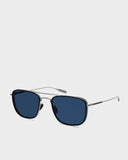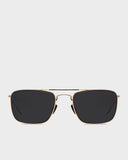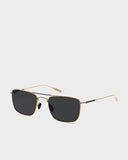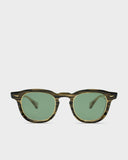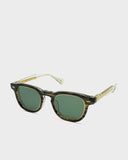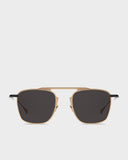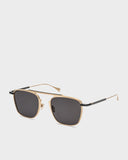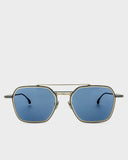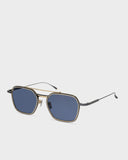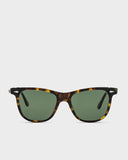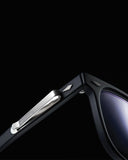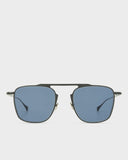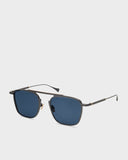Discover the World of Japanese Sunglasses
In a world where eyewear is often mass-produced and trend-driven, Japanese sunglasses stand apart. They are the embodiment of craftsmanship, heritage, and thoughtful design. Rooted in precision and cultural discipline, these sunglasses are made not just to block sunlight but to elevate your entire experience of wearing them. At Sun of Japan, we’ve curated a collection that honors the timeless philosophy of Japanese artisanship—where detail is everything, and nothing is rushed.
Japanese sunglasses are not defined by logos or fleeting styles. Instead, they draw on decades of optical mastery, historical design references, and the belief that great design serves the wearer first. Whether you are drawn to minimalist titanium wireframes, thick vintage-inspired acetate, or modern hybrid designs that mix traditional craftsmanship with contemporary edge, this collection offers something rare—eyewear that feels purposeful, enduring, and deeply personal.
The Legacy of Craftsmanship Behind Japanese Sunglasses
When you choose Japanese sunglasses, you are choosing a tradition. Most of the world’s finest eyewear is crafted in Sabae, a small city in Fukui Prefecture that has quietly become the global capital for precision optics. For over a century, Sabae has been home to craftsmen who specialize in the painstaking creation of sunglasses, glasses, and lenses. What sets their work apart is not just skill, but a mindset—one that values every millimeter, every hinge, every surface finish.
These artisans often spend years perfecting their technique before taking lead on a single frame. Many of the tools and machines used in the making of Japanese sunglasses are hand-calibrated and decades old, precisely because they offer better control than their modern counterparts. The polishing, engraving, tumbling, and soldering involved in crafting a pair of Japanese sunglasses may take several days or weeks. But the result is something you can feel the moment you put them on—balance, comfort, character.
This is the antithesis of fast fashion. Each pair is a quiet statement of intention: made to last, made to evolve with you, and made to reflect the timeless value of patient design.
Why Japanese Sunglasses Feel Different
There is something unmistakable about the moment you try on a pair of Japanese sunglasses. The feeling is not flashy or immediate—it’s subtle, but persuasive. The frames hug the face just right. The hinges open with a smooth, confident motion. The weight is evenly distributed across your brow and ears. This is not accidental—it is the product of hundreds of micro-decisions made by designers, engineers, and craftspeople, all working in harmony.
Unlike generic sunglasses, which often prioritize aesthetics over functionality, Japanese sunglasses are built to serve the body first. The materials are hypoallergenic and skin-friendly. The temples are shaped to reduce pressure. The nose bridges are sculpted for a comfortable, centered fit. Everything is designed so you don’t have to think about what you’re wearing. You simply wear it, and it works.
Over time, these sunglasses feel even better. Acetate frames begin to mold gently to the shape of your head. Titanium models retain their form and springiness through years of wear. Lenses remain clear and secure in their settings. What you get is eyewear that becomes an extension of you—effortless, reliable, and quietly luxurious.
The Materials That Define Japanese Sunglasses
At the heart of Japanese sunglasses lies material excellence. It begins with acetate—usually made from cotton-based cellulose, carefully aged for pliability and clarity. Unlike plastic, this acetate is biodegradable, polishable, and more skin-friendly. Its visual depth cannot be replicated by synthetic imitations, offering rich tortoiseshells, smoky greys, and subtle translucents that catch light in different ways throughout the day.
Then there is titanium—one of Japan’s greatest contributions to modern eyewear. This metal is extremely strong yet featherlight, making it ideal for rimless, semi-rimless, and minimal sunglass designs. It is corrosion-resistant, hypoallergenic, and ideal for those who seek durable, weightless eyewear that doesn’t leave pressure marks or require frequent adjustments.
Some Japanese sunglasses also incorporate stainless steel, 18k gold plating, sterling silver, and lacquer detailing, especially in limited-edition and artisan collaborations. These materials aren’t chosen for show—they’re chosen because they last, perform, and express something about the maker and the wearer. Every surface has been touched, tested, and perfected. Nothing is added without purpose.
Design Aesthetics in Japanese Sunglasses
The visual language of Japanese sunglasses is distinct. It is driven by the Japanese principle of “shibui”—aesthetic subtlety that balances simplicity with complexity. These frames are never loud or exaggerated. Instead, they are refined in proportion, quietly sculptural, and always human-centered.
Vintage-inspired styles often draw from archival references—1940s military aviators, 1950s browlines, or 1960s rounded frames—with updated fit and modern lens curvature. You’ll find frames that are thick but not heavy, structured but never harsh, and expressive without being eccentric. The details are what define them: beveled edges, exposed rivets, engraved bridges, custom hinges, and temple cores visible through translucent acetate.
Contemporary models embrace minimalism without sterility. Sleek titanium frames, low-profile wraparounds, and squared lenses reflect a modern design ethos rooted in functionality. These are frames that let your personality come through, rather than distract from it.
Lens tints are also carefully chosen—not just for UV protection, but for mood and clarity. You’ll find neutral greys, warm browns, deep greens, and sometimes rose or yellow tones designed to heighten contrast, reduce eye strain, or simply offer a different visual character in varying light.
Japanese Sunglasses as Everyday Companions
Japanese sunglasses are made to be worn—not just for style, but as part of your daily life. Whether you’re heading to work, biking through the city, traveling abroad, or taking a weekend drive, these sunglasses offer a level of comfort and reliability that makes them indispensable.
Their weightlessness means you won’t feel them resting on your face. Their fit ensures they won’t slide or pinch during active wear. Their lenses offer consistent clarity without warping, fogging, or over-darkening. And because the frames are made with real-world use in mind, they resist scratches, adjust easily when needed, and age beautifully over time.
More importantly, they match any mood or outfit. A matte black titanium frame feels right in a boardroom or creative studio. A warm brown tortoiseshell acetate frame looks just as natural at the beach as it does at a café. These sunglasses don’t dictate how you wear them—they adapt to you.
Choosing the Right Pair of Japanese Sunglasses
Finding the right pair of Japanese sunglasses starts with knowing how you want to feel. Do you want something that disappears into your look, or something that gives structure to your presence? Are you drawn to soft lines or bold silhouettes? Do you need high-performance lenses for bright sun, or are you looking for something that balances light without darkening your perspective?
For a classic everyday look, rounded or square acetate frames offer warmth and character. They tend to flatter a wide range of face shapes and are especially popular in natural finishes like tortoise, smoke, or clear. If you prefer something minimal, titanium wireframes offer a near-weightless feel with a refined architectural presence. These are perfect for those who want simplicity without sacrificing sophistication.
Bridge shape and fit are also key. Keyhole bridges create a softer, retro feel and often work well for smaller or flatter nose bridges. Saddle bridges offer more surface contact and tend to feel more secure for long wear. Adjustable nose pads, often included in titanium models, allow for an even more tailored fit.
Lens tint plays an important role. Grey is neutral and balanced, brown adds warmth and contrast, green enhances clarity, and yellow or rose lenses can be mood-enhancing and better for variable light. Polarized options reduce glare, especially useful for driving or water environments.
Ultimately, the right pair of Japanese sunglasses will feel like a natural extension of your face—not an accessory, but a companion.
Why Japanese Sunglasses Are an Investment in Longevity
While many sunglasses are made for a season, Japanese sunglasses are made for years—sometimes decades. Their durability comes not only from the strength of the materials, but from the way they’re constructed. Frames are milled rather than molded, polished by hand rather than sprayed, and adjusted for balance before they ever reach your hands.
The finish on these frames resists peeling and cracking. Hinges remain firm without getting stiff or loose. Lenses stay optically aligned. And if something does need adjusting, the modular, repairable nature of many Japanese sunglasses means they can be restored rather than replaced.
They’re also timeless by design. Because the aesthetic is never trend-dependent, your frame remains relevant as your style evolves. Instead of replacing sunglasses each summer, you continue building a relationship with the one pair that works—visually, physically, emotionally.
This is why many of our customers return to Japanese sunglasses again and again. Once you’ve experienced them, it’s hard to go back to anything else.
Frequently Asked Questions About Japanese Sunglasses
What makes Japanese sunglasses different from other designer brands?
Japanese sunglasses are distinguished by their craftsmanship, precision fit, and timeless design. They are handmade using traditional methods in regions like Sabae, Japan, where eyewear production is treated as an artisan craft. Unlike mass-market frames, these sunglasses are built with higher-quality materials, greater attention to ergonomics, and a more refined aesthetic.
Are Japanese sunglasses comfortable for all-day wear?
Yes. Comfort is one of the hallmarks of Japanese sunglasses. They are designed to sit evenly on the face without slipping or creating pressure points. Lightweight materials like titanium and well-balanced acetate ensure all-day wearability without fatigue.
Do Japanese sunglasses offer UV protection?
Absolutely. All Japanese sunglasses include full UVA and UVB protection. Many models also feature polarized lenses or lens coatings to reduce glare, enhance clarity, and prevent eye strain in bright environments.
Can I get Japanese sunglasses with prescription lenses?
Yes. Many Japanese sunglasses are RX-compatible and can be fitted with custom prescription lenses. The structural integrity and precision of these frames make them ideal for optical customization.
How do I care for my Japanese sunglasses?
Use a microfiber cloth and lens-safe cleaner to wipe smudges and oils. Avoid alcohol-based products or abrasive materials. Store your sunglasses in a protective case when not in use, and avoid extreme heat to preserve the integrity of the frame and lenses.



